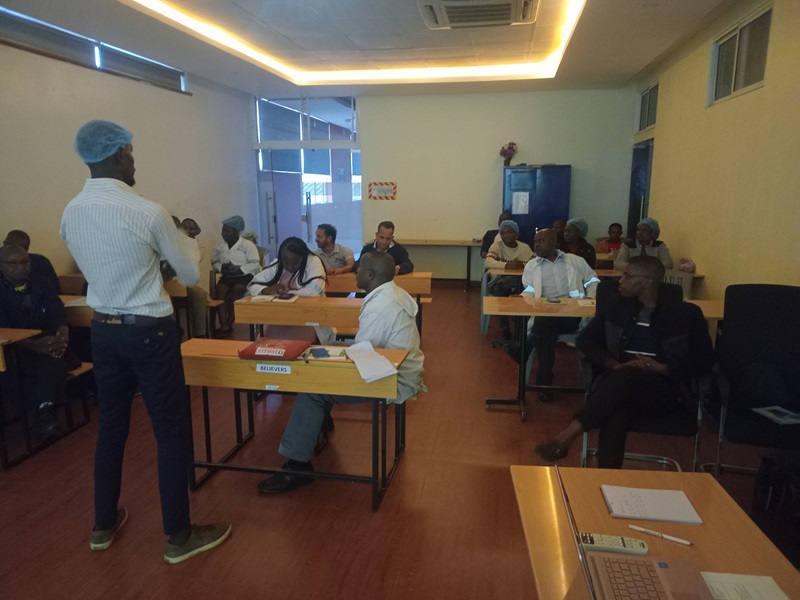Safety audits and inspections are both important parts of a workplace safety plan. Safety inspections identify hazards, while safety audits evaluate how well a company’s safety programs are working.
Safety inspections Look for hazards and risks, Evaluate current practices, and Identify safety hazards in the workplace.
Safety audits
How are safety audits and inspections used?
Types of safety audits: Compliance audits, Program audits, Management system audits, Healthcare safety audits, and Emergency Preparedness Audits.
At the most basic level, safety audits and inspections serve as critical tools in the identification and management of hazards in the workplace.
A safety audit is a structured process of collecting independent information on the efficiency, effectiveness, and reliability of an organization’s total health and safety management system. It helps identify areas of strength and weakness, providing a path for continuous improvement.
A safety inspection, on the other hand, is a routine process that focuses on the immediate safety aspects of the environment. It includes assessing machinery, buildings, and equipment to ensure they meet certain safety standards and regulations.
The significance of safety audits and inspections cannot be overstated. They are the bedrock upon which a safe working environment is built and maintained. Regular audits and inspections not only foster compliance with health and safety regulations, but they also contribute to employee wellbeing and productivity.
Beyond this, they offer businesses financial protection. By proactively identifying and mitigating risks, organizations can avoid costly incidents, reduce insurance premiums, and enhance their reputation among stakeholders.


The safety of employees is not just a moral responsibility, but a legal one as well. Regulatory bodies across the world have established comprehensive laws and regulations for various industries, which must be adhered to.
In the United States, for instance, the Occupational Safety and Health Administration (OSHA) imposes regulations to assure safe working conditions. Internationally, the International Organization for Standardization (ISO) sets a variety of standards, including ISO 45001, which relates to occupational health and safety management systems.
Understanding these regulatory requirements is crucial to conducting effective safety audits and inspections, and achieving compliance. As we delve further into this guide, we will shed light on these requirements and standards, and present best practices to meet and exceed them.
As we delve deeper into the importance of safety audits and inspections, let’s consider them from several perspectives, ranging from enhancing workplace safety to improving organizational reputation.
1. Enhancing Workplace Safety
Safety audits and inspections play a pivotal role in enhancing workplace safety. These processes offer a systematic, objective tool for identifying potential hazards, unsafe work practices, and risk factors in a working environment. By identifying and mitigating these issues, safety audits and inspections help create a safer, healthier workplace.
Consider the complex machinery in a manufacturing plant, the chemical hazards in a laboratory, or the physical dangers on a construction site. Regular audits and inspections can identify equipment that is improperly installed or maintained, processes that expose workers to harmful substances, or environments that pose physical risks. By doing so, they provide opportunities to rectify these issues and protect workers.
2. Ensuring Compliance with Safety Regulations
Regulatory bodies worldwide have laid down safety and health standards that organizations must comply with. Safety audits and inspections are key to ensuring such compliance.
Non-compliance can result in hefty fines and penalties, legal action, and even shutdown of operations in severe cases. Regular audits and inspections help organizations stay abreast of their compliance status, giving them a chance to rectify shortcomings before they attract punitive measures or cause accidents.
3. Reducing Accidents and Incidents
A significant part of accident prevention is the early identification of potential hazards. By proactively identifying and mitigating risks, safety audits and inspections contribute significantly to reducing workplace accidents and incidents.
Safety audits scrutinize processes, practices, and systems for any potential hazards or non-compliance, while safety inspections catch physical hazards or equipment malfunctions that could lead to accidents. Together, they form a robust system that significantly diminishes the possibility of workplace accidents.
4. Improving Organizational Efficiency and Reputation
A safer workplace is often a more efficient one. When employees work without fear of accidents, and systems and machinery function as they should, productivity increases. Thus, safety audits and inspections indirectly contribute to improving organizational efficiency.
Furthermore, a good safety record enhances a company’s reputation. It attracts talent, instils confidence in clients and stakeholders, and demonstrates corporate responsibility. It shows that the organization values its people and takes its obligations seriously.
5. Case Study: The Implications of Neglecting Safety Audits
To truly understand the importance of safety audits and inspections, let’s examine the consequences of neglecting them. The Chernobyl nuclear disaster in 1986 serves as a stark reminder.
A flawed reactor design coupled with inadequately trained personnel led to an explosion during a safety test. The subsequent release of radioactive materials resulted in numerous immediate deaths, long-term health impacts, and the displacement of hundreds of thousands of people.
Post-accident investigations pointed to numerous safety procedure violations, reflecting a lack of proper safety audits and inspections. While regulatory safety standards existed, the absence of a robust system to enforce these standards contributed to the disaster. The Chernobyl disaster underscores the vital importance of not just having safety standards, but also regularly auditing and inspecting to ensure compliance with these standards.
Afrisafe International Ltd, a Kenyan-owned company, provides comprehensive Environmental, Occupational Health, and Safety services to government, public, private, and community clients.